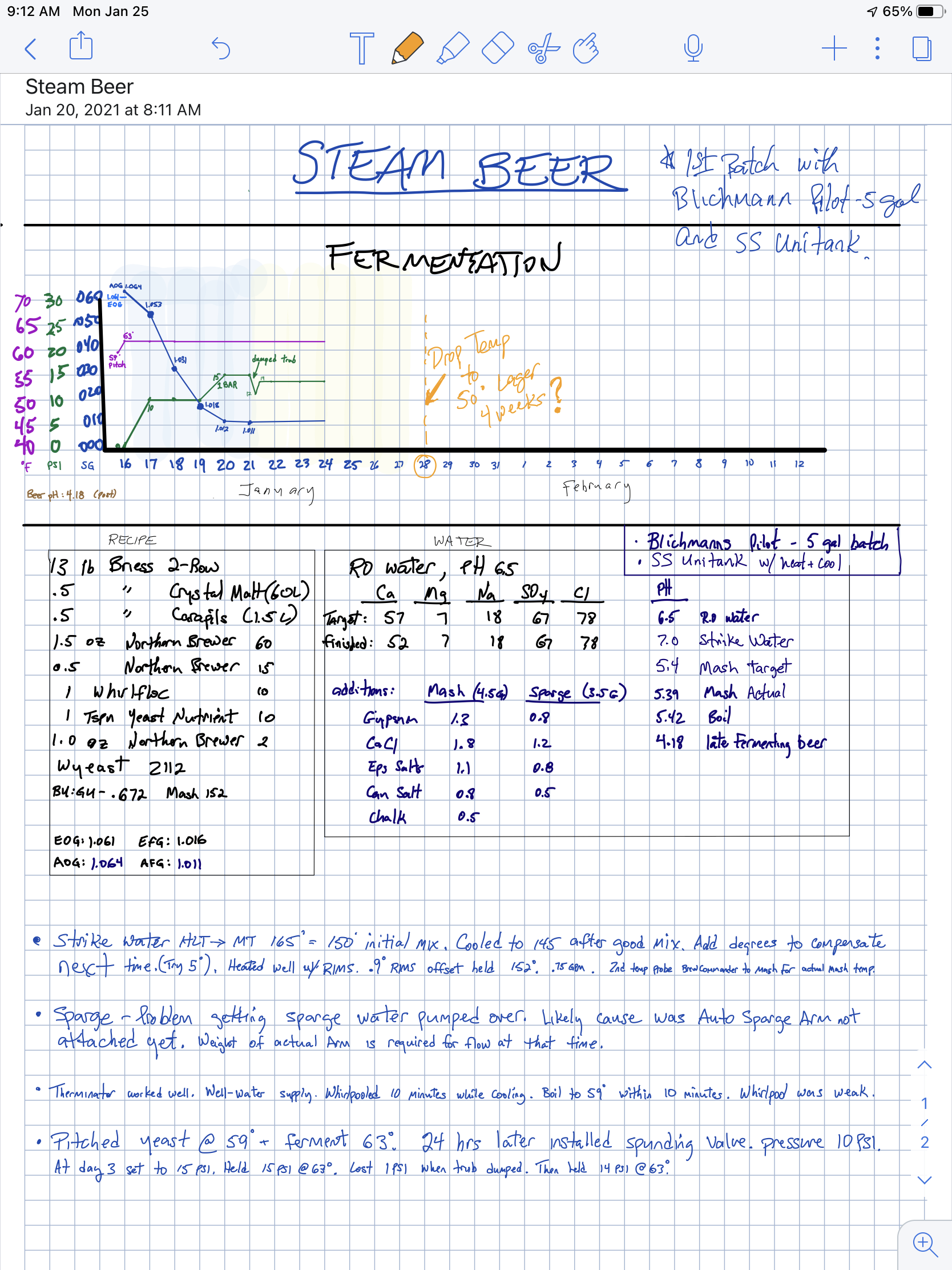jackbflyin
Active Member
Just brewed a California common style beer. First batch brewed on Blichmanns Pilot 5 gal. Detailed notes because I’m just starting to use Blichmanns system and SS Unitank. I welcome any critique. I used RO water so additions are shown. Specific question is why did I get such a lower AFG 1.011 instead of EFG 1.016? I plan to leave at 63 degrees /14 psi fermentation 1 week after getting to FG then drop to 50 degrees and whatever pressure that gives me. Thoughts or recommendations? Should I use gelatin? (I have ability to add under pressure) Thanks for your input?





